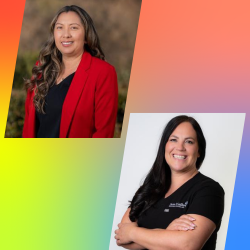Community engagement is an important step in increasing diversity in clinical trial enrollment. Engagement involves a conversation with members of the community, with a goal of building trust by being of service in ways most important to that community. This should happen long before any discussion about clinical research or a specific trial, meeting individuals where they are and understanding—and helping address—their needs and concerns.
“When people hear the term ‘community engagement,’ they may think this involves simply organizing a health-related fair or exhibition,” says Ashley Moultrie, Associate Director of Clinical Trial Diversity at Syneos Health. “In fact, this is only one small piece of the engagement process. True community engagement contrasts with community outreach, which typically involves one-way communication—through flyers, commercials, call campaigns, or mailings—and waiting to see who responds. Engagement is a long-term, bi-directional relationship.”
“The first step in community engagement is to identify and build relationships with leaders in the community you wish to serve—and be committed to cultivating and maintaining these relationships,” states Moultrie. “Identifying ongoing needs and helping provide resources or support then enables us to be helpful community partners.”
Partnering with leaders who are already well respected and highly engaged within the community can help elevate the role of clinical research in healthcare as a whole. Once relationships have been established and fostered, conversations about the clinical trial journey can begin, introducing elements such as informed consent, so that potential study participants become familiar with what is involved. Informed consent cannot start at the screening visit. Instead, early engagement and education enable individuals to make informed decisions when future study opportunities are presented.
“We have to hold space for hard questions, and respond to these appropriately, helping to prove our trustworthiness,” states Moultrie. “These conversations should take place in community spaces where people are comfortable, and with a trusted supporter present. We must be willing to acknowledge troubling historical truths and be ready to address the progress we’ve made as an industry. This includes the high levels of oversight and protections in place for today’s study participants—with checks and balances, plus entire career paths dedicated to ensuring accountability for participant safety.”
Assessing and Sustaining Your Community Engagement Plans and Partnerships
Join Ashley at ACRP 2025 [April 24-27; New Orleans, La.] as she explores the pivotal role our communities play in shaping a more equitable and inclusive clinical trial landscape and provides tools for deploying impactful and sustainable community engagement plans. View complete schedule.
Key performance indicators for community outreach go beyond traditional return on investment. Success cannot be measured simply in numbers of patients randomized to a particular trial. More useful metrics are numbers of people encountered, numbers of conversations started, and amounts of physical or digital information shared. Invitations to return to trusted community spaces are also a clear metric of success.
“The elements of a community engagement plan are ‘the who, the what, and the why,’” explains Moultrie. “Who are the individuals that make up the community you serve, what are their needs, and how can we support those needs? These elements come together in authentic engagement to address community challenges and help build trust in the clinical research enterprise.”
Edited by Jill Dawson




